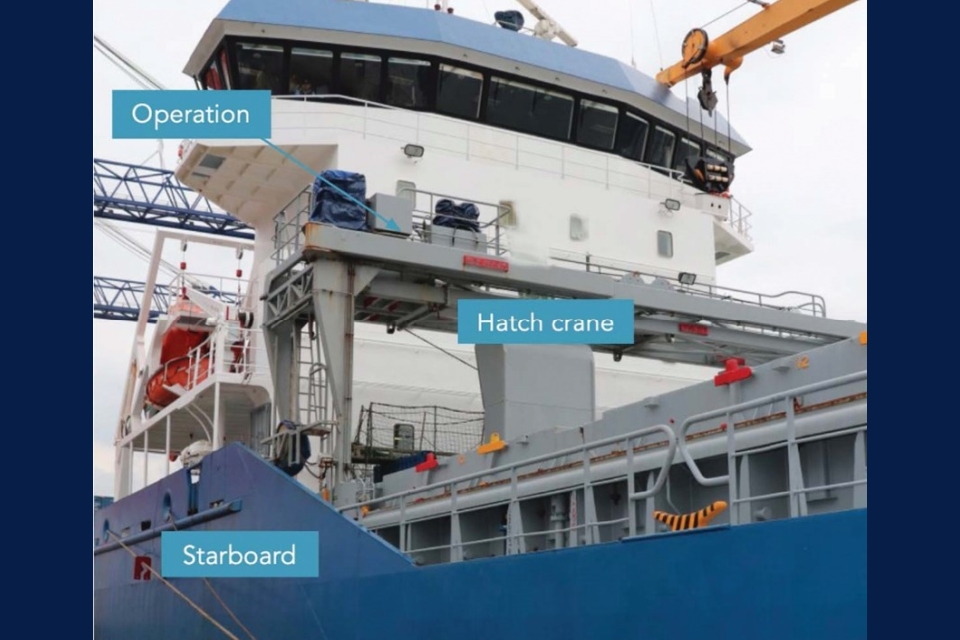Current gantry crane practice and risk reduction measures are not adequate, finds a report from Dutch Safety Board (DSB). The Nautical Institute discusses the report’s findings in its latest Mars Report.
The Nautical Institute gathers reports of maritime accidents and near-misses. It then publishes these so-called Mars Reports (anonymously) to prevent other accidents from happening. In this case, a report of the Dutch Safety Board is discussed.
The in-depth DSB report on issues with gantry cranes was published in July 2022, following a string of accidents involving where crew or shore staff suffered injuries or death. The report was based on six occurrences that involved crushing by the gantry crane due to entrapment, with very similar sequences. Two took place on the same vessel within three years of each other.
Readers can find past Mars Reports involving gantry cranes at 202201, 202211, 201525, 201460 and 98058.
Also read: Gantry crane improvisation leads to one fatality
Fundamental weaknesses of gantry crane operations
The report underlines some of the fundamental weaknesses of gantry crane installations and operations. Among other things, it highlights that:
- The crane operator’s field of view is severely restricted and does not allow a proper overview of both sides of the crane’s track.
- The vessel layout allows persons to cross the track of the gantry crane.
- Communication with others is essential for determining if the hatch crane can be operated in a safe manner. Yet, this introduces the risk of miscommunication which was a contributing factor in at least one fatality.
Also read: Nautical Institute warns of gantry crane dangers after stevedore fatality
Gantry crane measures with residual risks
Various measures have been adopted to control bad outcomes, but these appear to still have unacceptable residual risks. For example, having alarms continuously sounding while the crane is operating is well-intended – but they can become routine. Their efficacy will probably decline with time as crew become desensitised to the alarm and qualify it as “normal”.
Emergency crane stop buttons are now a common installation. Yet, analysis found that in many past occurrences the emergency stop button was not used because it was out of the victim’s reach.
Finally, an analysis of the accidents has shown that it is common practice to carry out hatch crane operations at the same time as other operations. In many cases, the victim was not expected to be in the danger zone because he was carrying out operations not related to the use of the hatch crane.
Also read: ‘Crew needs to realise gantry crane operators are mostly driving blind’
Staying out of the ‘line of fire’
The DSB concluded that current gantry crane practice and risk reduction measures are not adequate. Clearly, a new paradigm is needed. In many industries, working in the “line of fire” is not allowed. Yet, any crew member stepping across a gantry rail while it is operating is in the “line of fire”.
It is essential that work is coordinated. A clear framework and agreements for simultaneous yet disparate operations should be established. Without this, the risk of entrapment cannot be adequately controlled.
Advice from The Nautical Institute
- Never cross the gantry crane rails while the crane is in use. If it is necessary to cross the rails, the crane should be stopped.
- Unrelated work on deck or in the holds should not be scheduled while gantry crane operations are taking place. If schedules clash, one or other of the operations should be rescheduled.
Also read: Alcohol consumption contributory factor in crane crush fatality
Mars Reports
This accident was covered in the Mars Reports, originally published as Mars 202336, that are part of Report Number 370. A selection of the Mars Reports is also published in the SWZ|Maritime magazine. The Nautical Institute compiles these reports to help prevent maritime accidents. That is why they are also published (in full) on SWZ|Maritime’s website.
More reports are needed to keep the scheme interesting and informative. All reports are read only by the Mars coordinator and are treated in the strictest confidence. To submit a report, please use the Mars report form.








